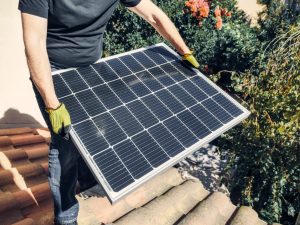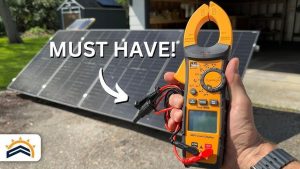Eel belongs to which phylum
Eel belongs to which phylum
Eel belongs to which phylum The contributors of this elegance lived withinside the Devonian period. They are clean water paperwork and the fossils which are nicely-preserved monitor positive inner systems.
ADVERTISEMENTS: Eel belongs to which phylum
(i) Pectoral appendages are jointed and subdivided right into a proximal and a distal component.
(ii) The distal component is blanketed with 4 longitudinal rows of plates.
(iii) The posterior lateral plate is united with the posterior dorsolateral plate, e.g., Pterichthys, Microbranchius, Bothriolepis (Fig. 6.fifty one A), Ceraspis.
Class (2) Coccostei (Arthrodira) (Up. Silurian – Up. Devonian) [Gk. Coccosteus, rough-like a berry bone;
Arthrodira, jointed double pieces]
(i) The contributors of this elegance are characterised through having sturdy cranial roof fashioned through the union of bony plates.
(ii) These bony plates are sculptured through the presence of tubercles.
(iii) The cranium is articulated through a couple of condyles.
(iv) The vertebrae lack centra however the neural and haemal arches are present.
(v) They are commonly called `joint- necked` fishes and flourished nicely throughout the Devonian period.
(vi) The posterior a part of the frame is prolonged right into a whip-like tail which can also additionally or won’t be blanketed through scales.
(vii) An operculum protecting the branchial arches is pretty evident.
(viii) The pectoral fins are substantially decreased and are represented through a couple of small unmovable lobed systems located one on every facet of the frame.
(ix) The pelvic fins are paired systems placed at the ventral facet.
(x) A nicely-fashioned dorsal fin is present.
The arthrodesis are fast-swimming and predatory paperwork. Some contributors of this institution have attained big length. Dinichthys and Titanichthys have recorded to be approximately nine metres in length.
The real systematic reputation of the institution is controversial. Although they’re claimed to be associated with the dipnoans and elasmobranchs, their near dating with the acanthodians is nicely-established.

Members of Fossil Placoderms
Subclass (1) Euarthrodira [Gk. Eu, true; arthrodira, joined double pieces]
The head carapace generally possesses of 4 pairs of marginal plates, 3 median plates and a couple of relevant plates. The sensory canal device is open.
Order (1) Arctolepiformes (Acanthaspida) (Up. Silurian — Low. Devonian)
(i) The head is small and the frame caratempo is long
(ii) The paired fins aren’t discovered. Dermal skeleton is nicely developed. e.g., Acanthaspis
Order (2) Coccosteiformes
(i) The pectoral backbone is immovable
(ii) The dermal skeleton is nicely developed. e.g., Coccosteus (Fig. 6.fifty one B), Leptosteus, Oxyosteus.
Order (3) Ptyctodontiformes
(i) The dermal skeleton is ill-developed.
(ii) The pectoral fins aren’t discovered however a couple of pectoral spines are present.
(iii) The ventral fins are nicely-developed, e.g., Ptyctodus
Subclass (2) Phyllolepida [Gk. Phyllolepida, leaf scales]
(i) The dermal cranial roof is fashioned through one big median cephalic plate and 5 pairs of marginal plates.
(ii) The head and trunk armour are rigidly related to every other, e.g., Phyllolepis.
Appendix to Class Coccostei: Stegoselachii or Rhenanida:
Stensio (1936) united the numerous organizations above the order rank below the time period “Placoderm” (the plate skin). He blanketed pterichthyes (Antiarchi), Coccostei (Arthrodira), Stegoselachii and Rhenanida.
Order Stensioelliformes (Stegoselachii):
The institution is represented in Lower Devonian Coccosteans.
(i) The bead is armoured with bony plates and immovably stays connected with trunk.
(ii) The 5 gill openings are on every facet and blanketed through operculum.
(iii) The pectoral fins are with out spines and are tons elasmobranch-like. e.g., Stensioella.
Order Gemuendiniformes (Rhenanida):
The institution Gemuendiniformes (Rhenanida) is represented through Lower Devonian Coccosteans.
(i) The frame is flattened dorsoventrally corresponding to the cutting-edge rays, with a large head. The mouth is located on the anterior end.
(ii) The frame is blanketed through small denticles which might be connected to the bony plates.
(iii) The bony plates represent the frame armour.
(iv) The cranium is absolutely ossified.
(v) The gills are blanketed through operculum.
(vi) The nasal openings are located on the dorsal facet in among the eyes, e.g., Gemuendina (Fig. 6.fifty one C), Asterosteus.
Order jagoriniformes: Eel belongs to which phylum
(i) The cranial roof is represented through isolated tubercles-like structure, now no longer through plates.
(ii) The shoulder girdle is blanketed through dermal bones.
(iii) The nasal openings are located on the dorsal facet, earlier than the orbits.
(iv) The small, severa enamel aren’t ankylosed with the jaws, e.g., Jagorina.
Class (3) Acanthodii (Upper Silurian to Devonian):
This elegance consists of the maximum primitive placoderms. The contributors are smaller in length and are seemed as `needle-finned sharks` due to their eel2 superficial resemblance with the shark. Eel belongs to which phylum





